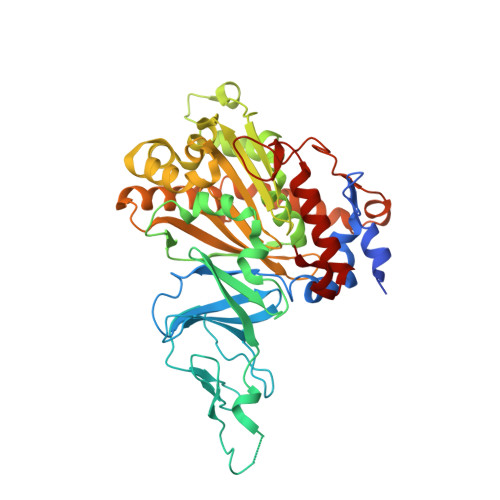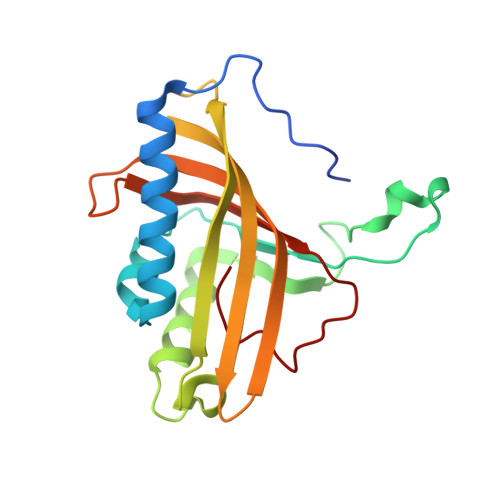Structural Insight Into the Expanded Pcb-Degrading Abilities of a Biphenyl Dioxygenase Obtained by Directed Evolution.
Kumar, P., Mohammadi, M., Viger, J.F., Barriault, D., Gomez-Gil, L., Eltis, L.D., Bolin, J.T., Sylvestre, M.(2011) J Mol Biology 405: 531
- PubMed: 21073881
- DOI: https://doi.org/10.1016/j.jmb.2010.11.009
- Primary Citation of Related Structures:
2XR8, 2XRX, 2XSH, 2XSO - PubMed Abstract:
The biphenyl dioxygenase of Burkholderia xenovorans LB400 is a multicomponent Rieske-type oxygenase that catalyzes the dihydroxylation of biphenyl and many polychlorinated biphenyls (PCBs). The structural bases for the substrate specificity of the enzyme's oxygenase component (BphAE(LB400)) are largely unknown. BphAE(p4), a variant previously obtained through directed evolution, transforms several chlorobiphenyls, including 2,6-dichlorobiphenyl, more efficiently than BphAE(LB400), yet differs from the parent oxygenase at only two positions: T335A/F336M. Here, we compare the structures of BphAE(LB400) and BphAE(p4) and examine the biochemical properties of two BphAE(LB400) variants with single substitutions, T335A or F336M. Our data show that residue 336 contacts the biphenyl and influences the regiospecificity of the reaction, but does not enhance the enzyme's reactivity toward 2,6-dichlorobiphenyl. By contrast, residue 335 does not contact biphenyl but contributes significantly to expansion of the enzyme's substrate range. Crystal structures indicate that Thr335 imposes constraints through hydrogen bonds and nonbonded contacts to the segment from Val320 to Gln322. These contacts are lost when Thr is replaced by Ala, relieving intramolecular constraints and allowing for significant movement of this segment during binding of 2,6-dichlorobiphenyl, which increases the space available to accommodate the doubly ortho-chlorinated congener 2,6-dichlorobiphenyl. This study provides important insight about how Rieske-type oxygenases can expand substrate range through mutations that increase the plasticity and/or mobility of protein segments lining the catalytic cavity.
- Department of Biological Sciences, Purdue University, West Lafayette, IN 47907, USA.
Organizational Affiliation:




















